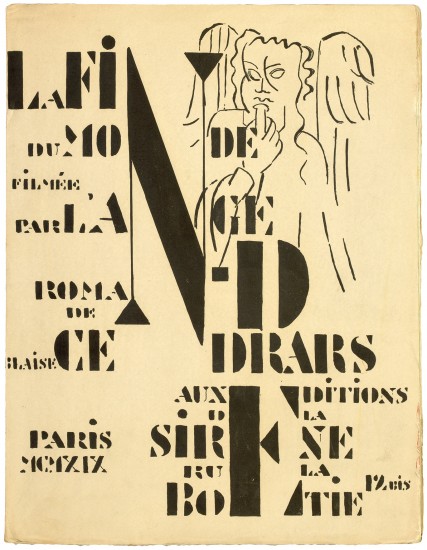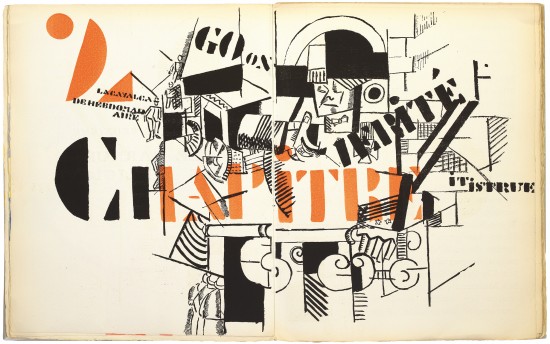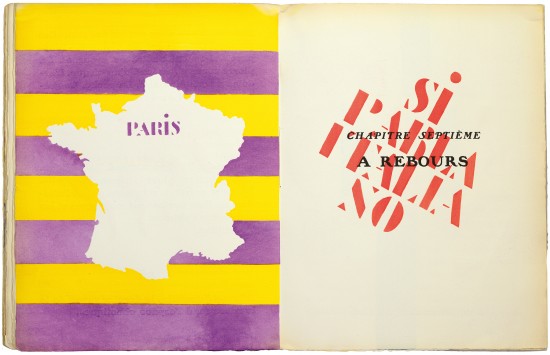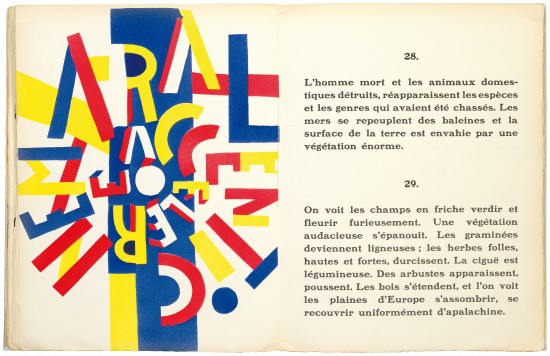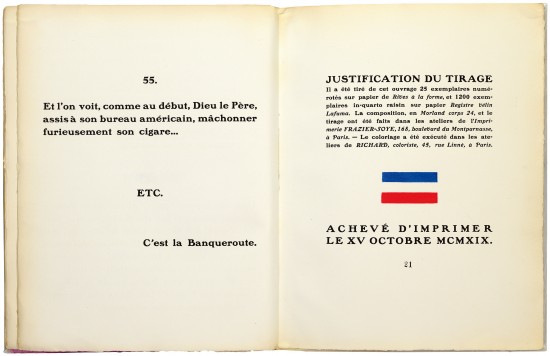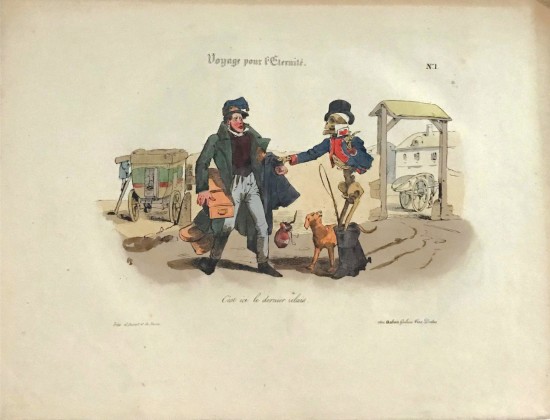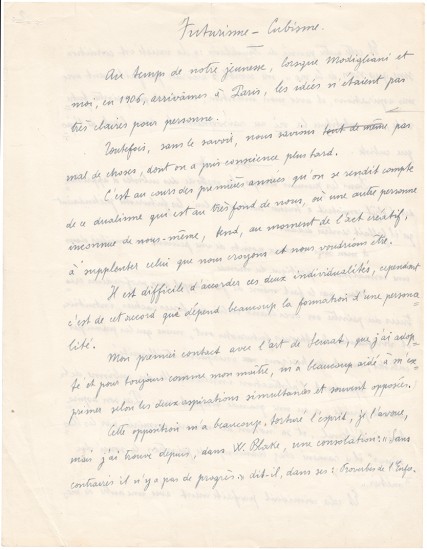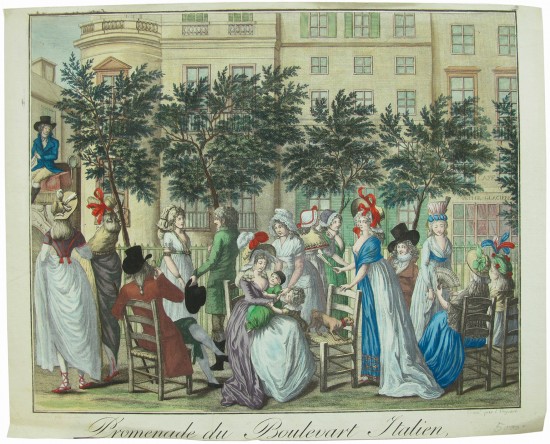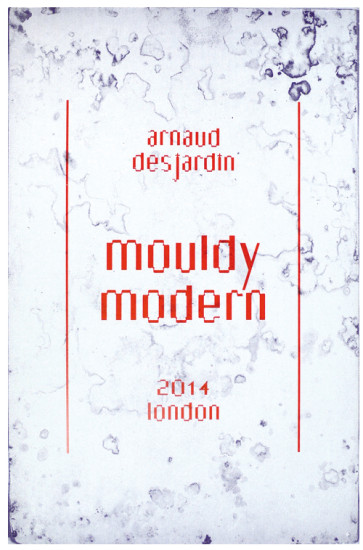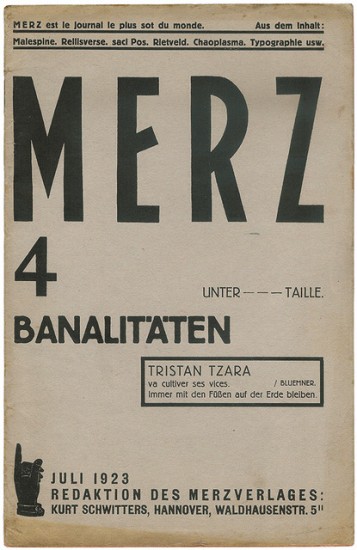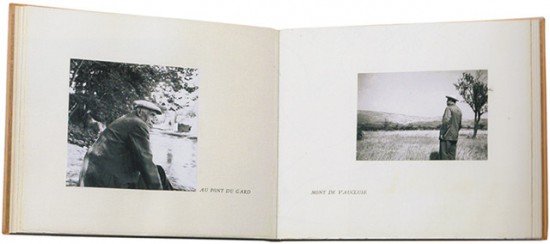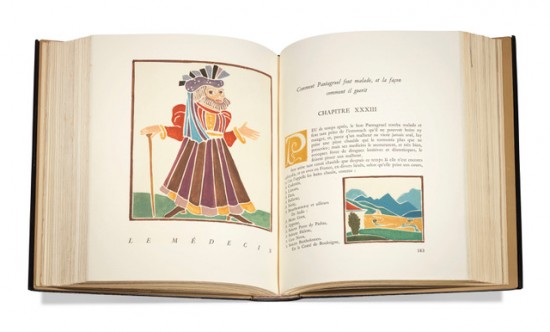La Fin du Monde Filmée par l'Ange N.-D. Roman. Compositions en Couleurs par Fernand Léger
Leger, Fernand. Cendrars, Blaise
Paris. Editions de la Sirène. 1919
Sold
A very rare large paper édition de tête example of Léger's important collaboration with Cendrars.
' ... the most beautiful and accessible French artist's book of its era.' (Donna Stein).
Copies of the édition de tête are prized in particular as they are larger than examples on ordinary paper (the normal edition of 1,200 copies were issued on registre vélin Lafuma which has tended to discolour with the passing of time) and the Rives paper of the édition de tête retains its original tone and the intensity and vibrancy of the pochoir colour.
From the edition limited to 1,225 numbered copies, with this one of 25 édition de tête copies - stamp-numbered '21' to the justification - on papier de Rives à la forme.
'Si le tirage sur papier ordinaire de 'La Fin du Monde filmée par l'Ange N.-D.' a considérablement jauni, les rares exemplaires sur grand papier ont gardé leur éclatante fraîcheur d'origine, qui en font un livre différent. L'harmonie du texte et des phares du vingtième siècle, et un chef-d'oeuvre de l'illustration au pochoir, à côté de 'La Prose du Transsibérien', de 'Il était un petit Pie' et de 'Jazz': 'Un des plus accomplis, de plus novateurs, des plus intrigants de son temps, comme, plus globalement, de l'histoire de cette forme de livre ... parfait 'livre de dialogue'' (Peyré).' (De Parallèlement à Chanson Complète, pg. 131).
' ... La Fin du monde, filmée par l'ange N.-D., was originally composed as a film script in 1916 and shows a firsthand awareness of the movies. This collaboration with Fernand Léger was issued in 1919 by Editions de la Sirène, owned by Jean Cocteau. In this farce of the Last Judgement, God runs a circus sideshow on Mars, starring biblical characters. Léger's illustrations are closely related to the story. His double-page chapter headings and other illustrations are a landmark of modern book design and build on the collage technique of Cubism, the literary calligrams of Apollinaire, and the cinematic inventions of Abel Gance.' (Artist Books in the Modern Era, pp. 21 - 22).
As stated previously, copies of the édition de tête are very rare and we can trace only a handful of copies on the market: the Ortiz-Patino copy bound by de Gonet, the Loliée copy bound by Guglielmoni, the second Loliée copy bound by Leroux, the Paricaud copy bound by Bonet, as well as two copies in wrappers: copy number 3 with condition problems (among them a tear to the justification and a trimmed leaf) and the present copy; it is highly likely that several copies have perished in the years between publication and the present time.
[see Castleman 170 - 171 for the ordinary issue; From Manet to Hockney 54; Logan 26, pp. 78 - 79; see De Parallèlement à Chanson Complète, pp. 127 - 131].
' ... the most beautiful and accessible French artist's book of its era.' (Donna Stein).
Copies of the édition de tête are prized in particular as they are larger than examples on ordinary paper (the normal edition of 1,200 copies were issued on registre vélin Lafuma which has tended to discolour with the passing of time) and the Rives paper of the édition de tête retains its original tone and the intensity and vibrancy of the pochoir colour.
From the edition limited to 1,225 numbered copies, with this one of 25 édition de tête copies - stamp-numbered '21' to the justification - on papier de Rives à la forme.
'Si le tirage sur papier ordinaire de 'La Fin du Monde filmée par l'Ange N.-D.' a considérablement jauni, les rares exemplaires sur grand papier ont gardé leur éclatante fraîcheur d'origine, qui en font un livre différent. L'harmonie du texte et des phares du vingtième siècle, et un chef-d'oeuvre de l'illustration au pochoir, à côté de 'La Prose du Transsibérien', de 'Il était un petit Pie' et de 'Jazz': 'Un des plus accomplis, de plus novateurs, des plus intrigants de son temps, comme, plus globalement, de l'histoire de cette forme de livre ... parfait 'livre de dialogue'' (Peyré).' (De Parallèlement à Chanson Complète, pg. 131).
' ... La Fin du monde, filmée par l'ange N.-D., was originally composed as a film script in 1916 and shows a firsthand awareness of the movies. This collaboration with Fernand Léger was issued in 1919 by Editions de la Sirène, owned by Jean Cocteau. In this farce of the Last Judgement, God runs a circus sideshow on Mars, starring biblical characters. Léger's illustrations are closely related to the story. His double-page chapter headings and other illustrations are a landmark of modern book design and build on the collage technique of Cubism, the literary calligrams of Apollinaire, and the cinematic inventions of Abel Gance.' (Artist Books in the Modern Era, pp. 21 - 22).
As stated previously, copies of the édition de tête are very rare and we can trace only a handful of copies on the market: the Ortiz-Patino copy bound by de Gonet, the Loliée copy bound by Guglielmoni, the second Loliée copy bound by Leroux, the Paricaud copy bound by Bonet, as well as two copies in wrappers: copy number 3 with condition problems (among them a tear to the justification and a trimmed leaf) and the present copy; it is highly likely that several copies have perished in the years between publication and the present time.
[see Castleman 170 - 171 for the ordinary issue; From Manet to Hockney 54; Logan 26, pp. 78 - 79; see De Parallèlement à Chanson Complète, pp. 127 - 131].
[30 unnumbered leaves]. 4to. (330 x 254 mm). Illustrated with 22 designs by Fernand Léger (including those for the cover): 25 leaves with colour pochoir decoration including four double-page spreads, the half-title, title, justification and so on, the pochoir colour by 'les ateliers de Richard'. Stitched as issued and pasted into café au lait card wrappers with printed pictorial and typographic titles to front cover in black, title to spine and further vignette to rear cover, later protective morocco-backed wooden board chemise with gilt title to spine and matching slipcase.
#45661
